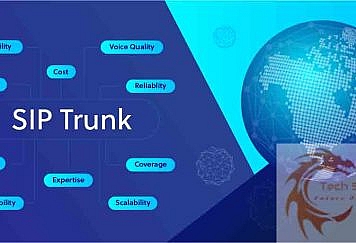Organizations realize the importance of unstructured data, which they can use for decision-making, analytic, and regulatory purposes. According to IDC, the volume of unstructured data is expected to grow to 175 billion terabytes (175 zettabytes) by 2025. This projected increase means that the once-ignored information will be used more frequently for analytics, business intelligence, and machine learning.
But the volume of unstructured data keeps increasing, and the traditional data storage methods fall short compared to the modern archiving solutions and platforms where extracting value from data is already integrated into storing information. Continuing to use traditional methods can have an additional burden on operation costs and IT management overheads. Thus, many companies need an unstructured data management platform for long-term use, which will ensure the ready availability of data.
Data storage and management are critical to many organizations, and they should put more thought into it. Traditional backup methods like Network Data Management Protocol (NDMP) can only store a maximum of 100 million files or 100TB of data. Since unstructured data generation is continuous, there will be too many files and too much data in an organization’s system. As such, traditional storage technology like NDMP cannot ensure disaster recovery, but it makes organizations rely on data replication, resulting in very little or no backup history. The traditional approaches have already served their time. New technologies for data storage and synchronization for other solutions will continue to protect data even if they exceed the volumes covered by standard data protection.
Challenges In Unstructured Data Management
Organizations struggle with managing their increasing volumes of unstructured data. It can be challenging to store, protect, and provide secure access to the data, as it also presents other challenges because of data’s scalability, complexity, and cost.
Full-Capacity Centers
The growth of unstructured data creates new demand for storage spaces, which poses additional difficulties. Most enterprises use an on-premise data center, but today, there could be issues with the power grid and floor space that impede expansion. High-density storage systems are available today; however, the acquisition may not be possible due to budget concerns. Likewise, there is a possibility that the storage solution the enterprise purchased may not work as expected.
From Terabytes To Petabytes
Many organizations today are no longer managing terabytes of data. Instead, they are now beginning to manage multiple petabytes of data. One petabyte is equivalent to 1,000 terabytes or one million gigabytes. As a result, they need more than legacy storage solutions to store, protect, backup, and recover data at this scale. Moreover, enterprises may have difficulty training or finding IT staff already experienced in managing this amount of data.
Data From Remote Offices
It is not only unstructured data from the main office that needs proper management. All data types from remote offices, such as satellite offices and branches, can have storage issues. In some areas, technology is not as advanced as the main headquarters. Likewise, branch offices may lack IT support, and recovery of lost files may need help from others. File data use up storage space, while backup solutions require additional bandwidth during the copying process. Enterprises must consider that a terabyte file directory will use two additional terabytes of space to store data backup and offsite data recovery.
Multiple Storage Spaces
Over time, an organization needs more data storage space. But since the current systems are still usable, their IT departments add more storage solutions to augment them. As the volume of data increases, there will be other systems, and for an organization with a global presence, their data silos may not have international visibility.
The Total Cost Of Data Ownership And Management
Enterprises must consider the total cost of ownership of unstructured data management. Various elements contribute to the increase in cost. First is the acquisition of storage infrastructure, including the additional expense of services and supportive products to maintain file data storage properly. Second, the IT department must include the ongoing costs of upkeep and maintenance and the purchase cycles of storage solutions. These expenses are not negligible. It can be a significant investment, considering that it includes research, evaluation, purchasing, and installation. There could be an increase in IT staff, too.
These are the challenges that face unstructured data management. While unstructured data is a veritable gold mine of information for improved business growth, sifting through an immense volume of information is no mean feat. Therefore, enterprises need an AI-driven data management platform that allows users to access these files and extract the required information immediately and securely.
Final Words
Active management of unstructured data is the more significant concern instead of the cost of storing the data. Aside from having a robust data management platform, it is critical to segregate the unstructured information into hot data and cold data. It will benefit organizations to store cold data that is rarely used in cheaper storage spaces. On the other hand, the organization can keep and manage hot data using the correct data management solution that can leverage historical data, for example, and allow the user to perform data search, data intelligence, and data analytics.
Follow TechStrange for more Technology, Business, and Digital Marketing News.





